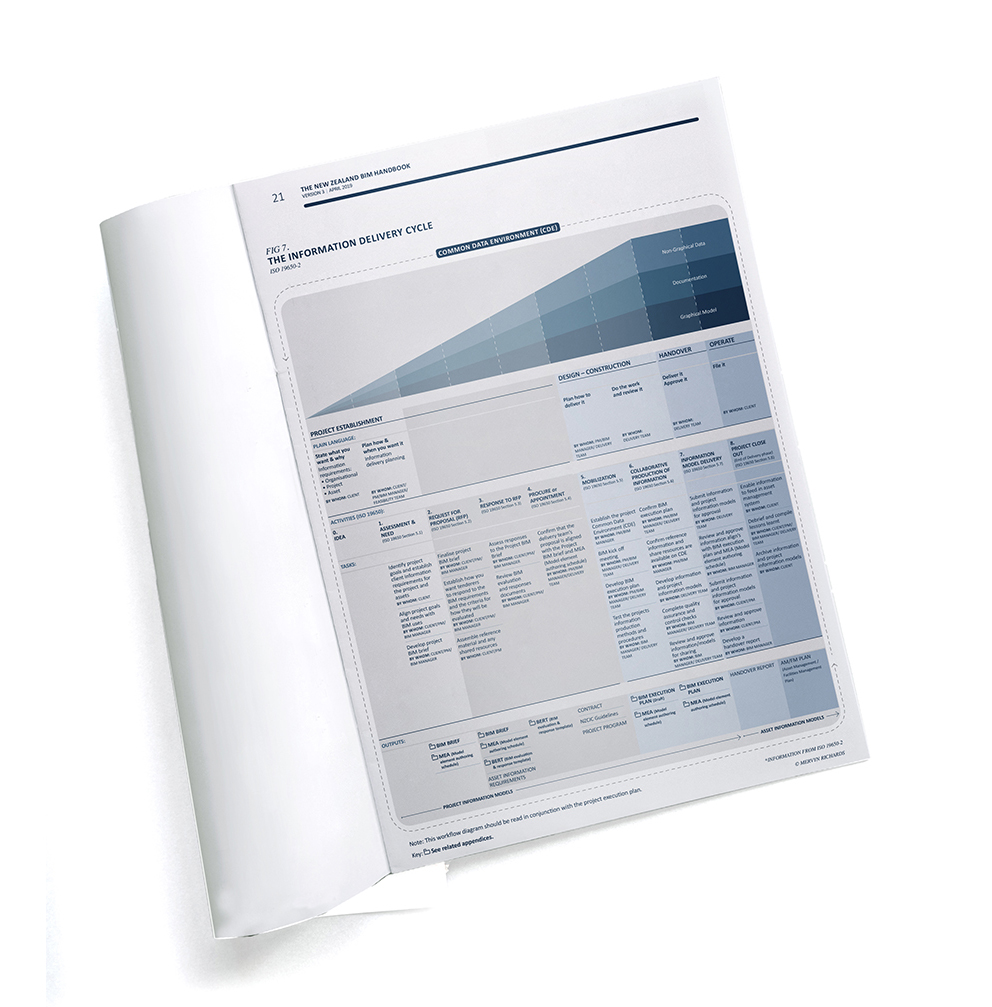Get started
There are a range of resources, tutorials and templates that cater to each user in the BIM process. Fundamental for everyone is The New Zealand BIM Handbook and related appendices. The handbook is an in-depth introduction through each aspect of BIM, following the normal progression of a project, covering: project establishment/briefing, design, procurement, construction, handover, operation. The accompanying appendices include a range of templates and examples to get you going.
Information delivery cycle
This is the generic process for identifying a project need, defining a project’s BIM requirements, procuring a suitable team, executing the design and construction BIM requirements, and producing project and asset information models relevant to the project’s needs. Each BIM project works through four stages 1. Project Establishment, 2. Design - Construction, 3. Handover and 4. Operate. Download the diagram here, but refer to section 5, page 21 of the NZ BIM Handbook for more detail on this.
Understand Collaboration
BIM’s many benefits focus on improved collaboration between project participants. But what does a collaborative approach really mean?
The process of creating a shared digital data set requires designers, contractors and subcontractors to work together in a seamless team to common objectives to meet the client’s brief. All members of the project team are literally on the same digital page, sharing information in a common data environment. BIM produces joined-up thinking that enables collaboration to happen, with beneficial outcomes for all.
Collaboration presents a number of challenges; Understanding the problem of the ‘old way’, Who manages the BIM process?, What software platform to use?, Who owns what?, and Where do responsibility and liability fall? This is all outlined in the article “Collaborating with BIM” including ways to manage the challenges and a handy check list as you start the BIM process.
Start with a Project BIM Brief
With any project, including BIM-based projects, shared understanding of overarching objectives is key to project success. A clear brief and an understanding of the constraints associated with a project are essential prerequisites. Producing a Project BIM Brief - a document that defines the client’s requirements and expectations for a project with regard to BIM - is an essential first step in the BIM process. Get more information in Section 5 of the NZ BIM Handbook, and find a project BIM brief template in Appendix E.
Additional Information
Plan and Prepare
Created by NATSPEC (bim.natspec.org) the paper “Getting started with BIM” provides specific guidance to Architectural or Engineering organisations that have made the decision to implement BIM and are asking ‘So what do we do next?’.




